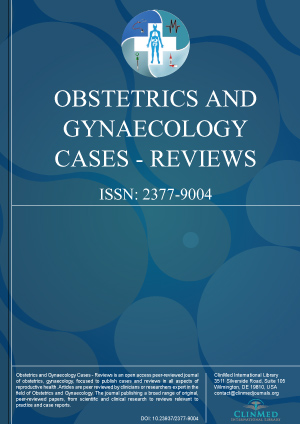Archive
Open Access DOI:10.23937/2377-9004/1410145
Uterine Leiomyoma with Lung Metastases Stump Tumour
Martin N, Escobar A, Varela A, Guillem E and Cortes-Funes H
Article Type: Case Report | First Published: April 24, 2019
We present one clinical case of a 41-year-old, female Russian origin patient, with lung nodules suggestive of metastases, with no primary tumor found, referred for study and treatment in our Oncology Department. After a deep analysis of the case, reviewed the literature and result of the pathology of biopsy from lung lesions, the final diagnosis reached was: Benign muscle tumors of Gynecological origin, with the capacity for produce distant metastasis compatible with STUMP Tumor (Metastatic leio...
Article Formats
- Full Article
- XML
- EPub Reader
Open Access DOI:10.23937/2377-9004/1410144
A Rare Case of Large Uterine Myoma in an Antenatal Women with Situs Inversus: A Case Report
Harsharan Kaur and Naina Kumar
Article Type: Case Report | First Published: April 15, 2019
Leiomyomas or fibroids are the most common benign tumor of uterus and it often increases in size during pregnancy. Its incidence in pregnancy is approximately 1.5-2% and is associated with increased risk of complication during pregnancy including abortions, preterm labor, red degeneration, malpresentations, increased cesarean section rates, postpartum hemorrhage. We hereby, discuss a case of large multi-lobed uterine fibroid complicating the second trimester of pregnancy. Our patient presented w...
Article Formats
- Abstract
- Full Article
- XML
- EPub Reader
Open Access DOI:10.23937/2377-9004/1410143
A Large Uterine Leiomyoma with Hypertrophied Omental Vessels: A Case Report
Ayse Nur Aksoy, Ebru Bulut Erdem, Gülsah Tanas Sarıkas and Elçin Telli
Article Type: Case Report | First Published: March 29, 2019
Uterine leiomyomas are the most common solid benign uterine neoplasms that arise from the overgrowth of smooth muscle and connective tissue in the uterus. It is estimated that 20-40% of women of reproductive age have uterine leiomyoma; the prevalence increases during the reproductive age and decreases after menopause. Uterine leiomyomas have been classified according to their location: Submucosal, intramural, subserosal. While subserosal uterine leiomyomas are usually asymptomatic; intramural an...
Article Formats
- Full Article
- XML
- EPub Reader

Volume 6
Issue 2
Issue 2
